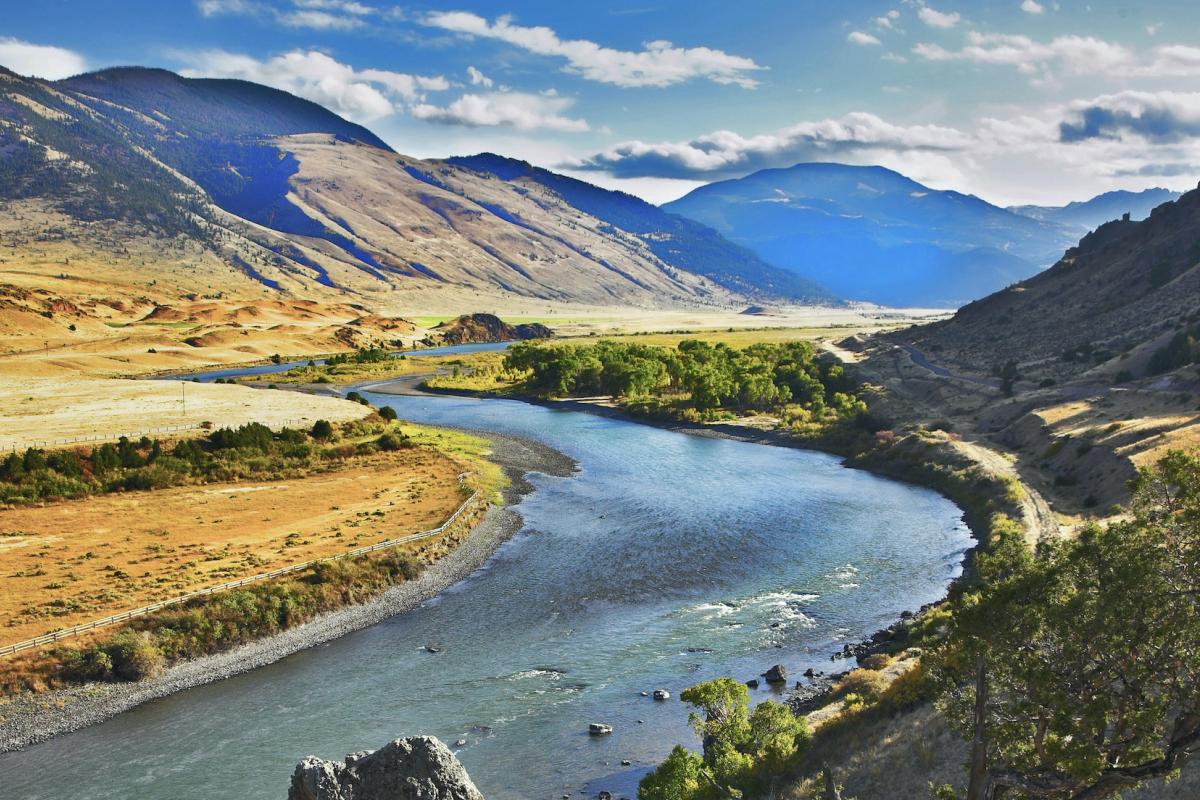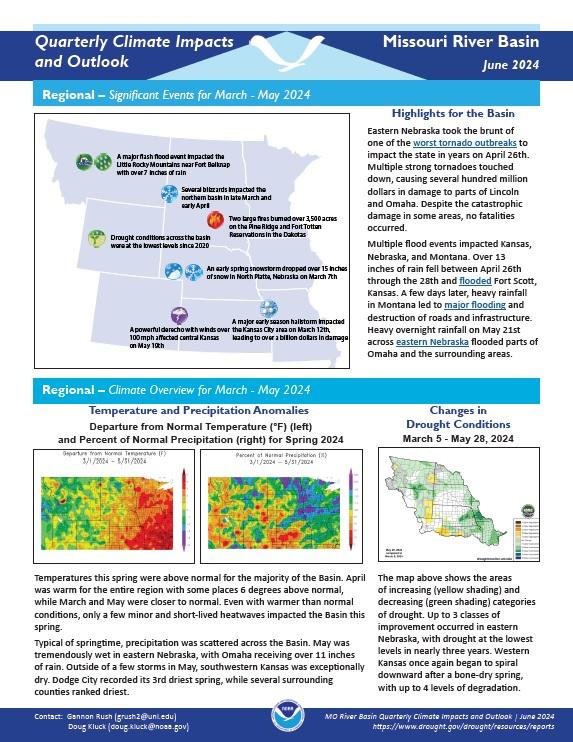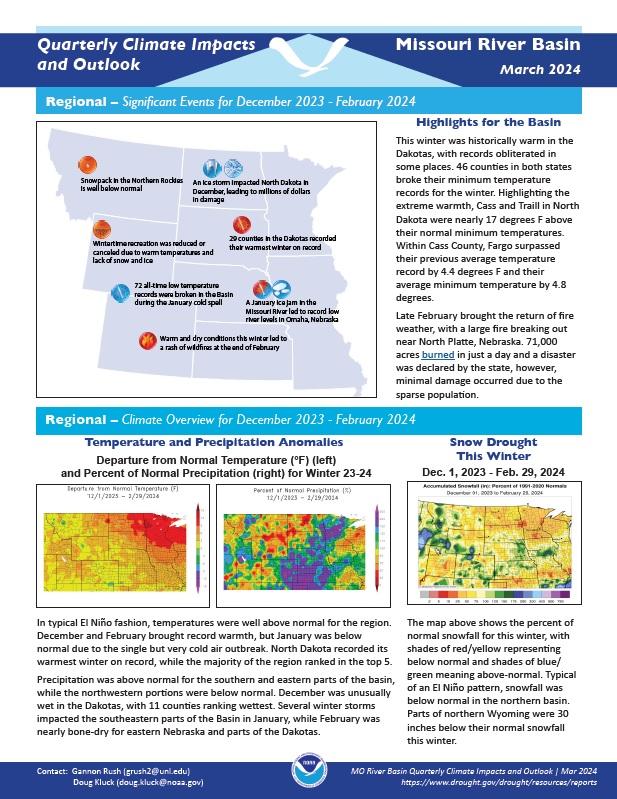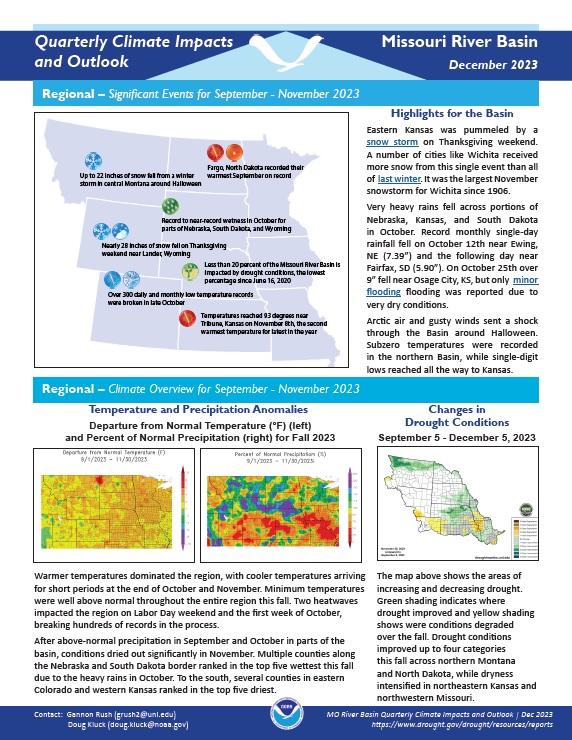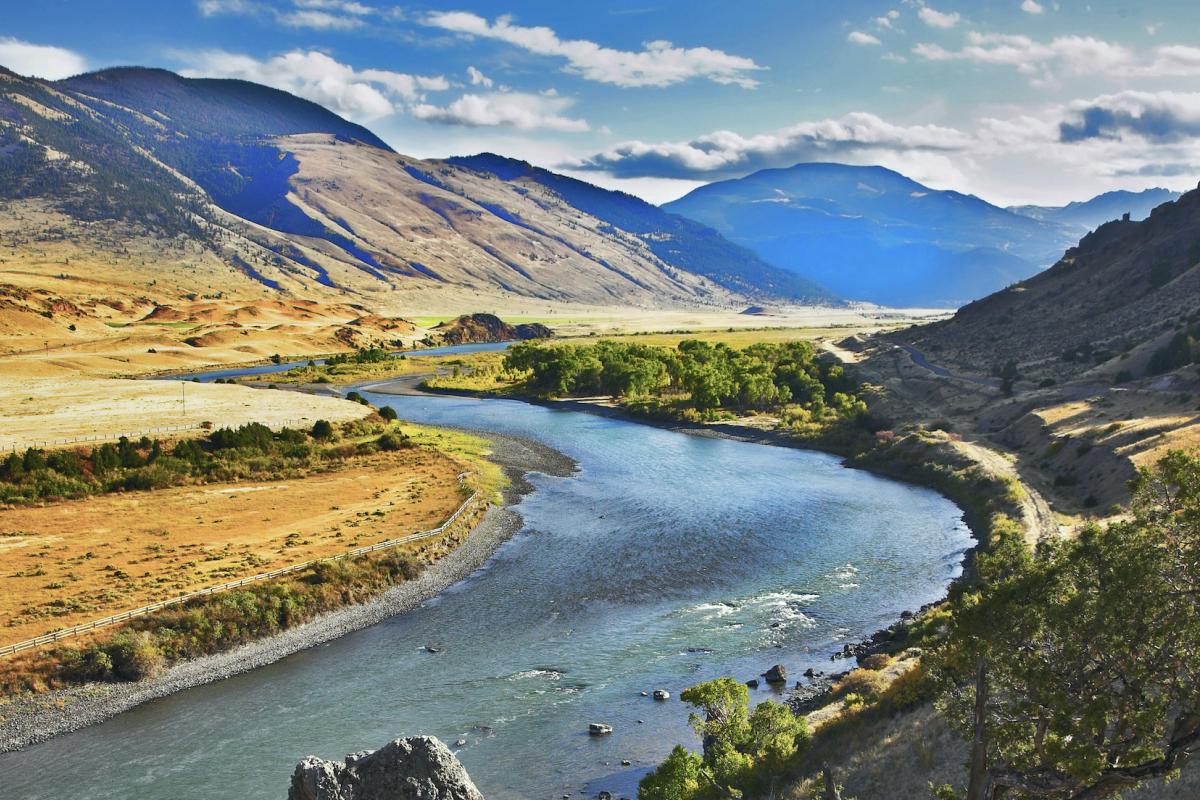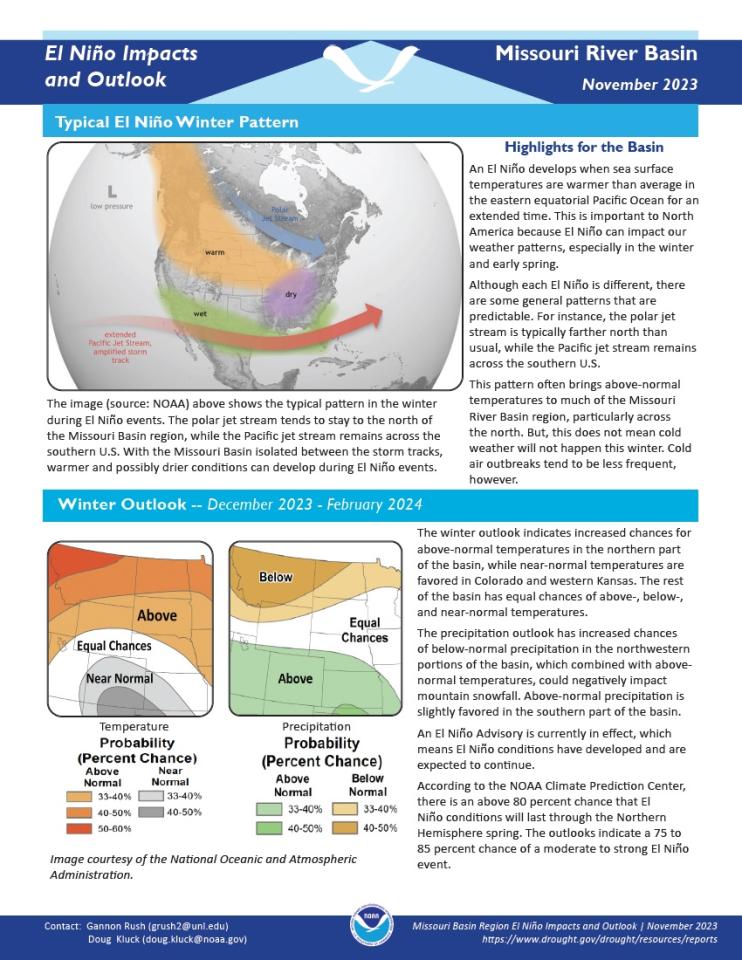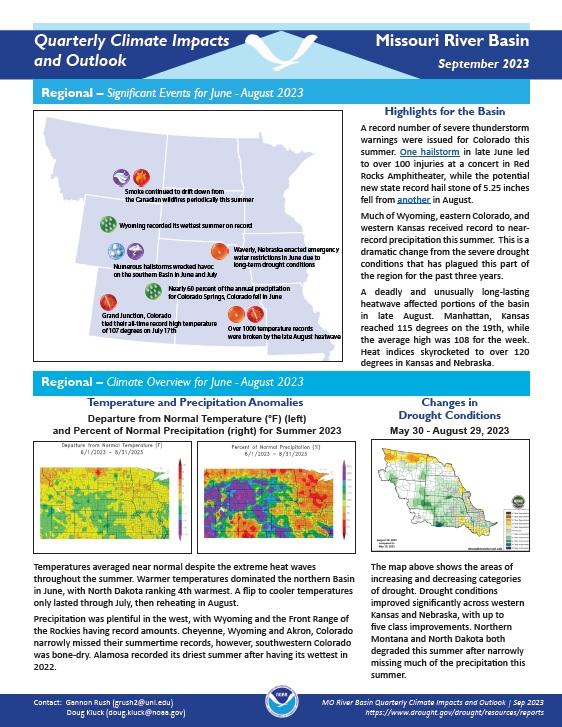Quarterly Climate Impacts and Outlook for the Missouri River Basin for March–May 2024. Dated June 2024.
Temperatures this spring were above normal for the majority of the Basin. Typical of springtime, precipitation was scattered across the Basin.
The Workshop for Building Drought Resilience in a Changing Climate with Upper Columbia and Missouri Basin Tribes was convened in September 2023 with an overarching goal of strengthening relationships between Tribal Nations, Tribal Colleges and Universities (TCUs), and their partners across the region.
Quarterly Climate Impacts and Outlook for the Missouri River Basin for December 2023–February 2024. Dated March 2024.
In typical El Niño fashion, temperatures were well above normal for the region. North Dakota recorded its warmest winter on record, while the majority of the region ranked in the top 5. Precipitation was above normal for the southern and eastern parts of the basin, while the northwestern portions were below normal.
Quarterly Climate Impacts and Outlook for the Missouri River Basin for September–November 2023. Dated December 2023.
Warmer temperatures dominated the region, with cooler temperatures arriving for short periods at the end of October and November. Minimum temperatures were well above normal throughout the entire region this fall. After above-normal precipitation in September and October in parts of the basin, conditions dried out significantly in November.
This handout provides information on the typical EL Niño winter pattern; the El Niño outlook; potential winter and spring impacts; and comparisons of conditions during previous El Niño years for the Missouri River Basin region. Updated November 2023.
NOAA’s Regional Climate Services Program created these outlooks to inform the public about climate impacts within their respective regions. Each regional report contains easy-to-understand language, and anyone can access them through the U.S. Drought Portal.
Quarterly Climate Impacts and Outlook for the Missouri River Basin for June–August 2023. Dated September 2023.
Temperatures averaged near normal despite the extreme heat waves throughout the summer. Precipitation was plentiful in the west, with Wyoming and the Front Range of the Rockies receiving record amounts. Cheyenne, Wyoming and Akron, Colorado narrowly missed their summertime records; however, southwestern Colorado was bone-dry.


